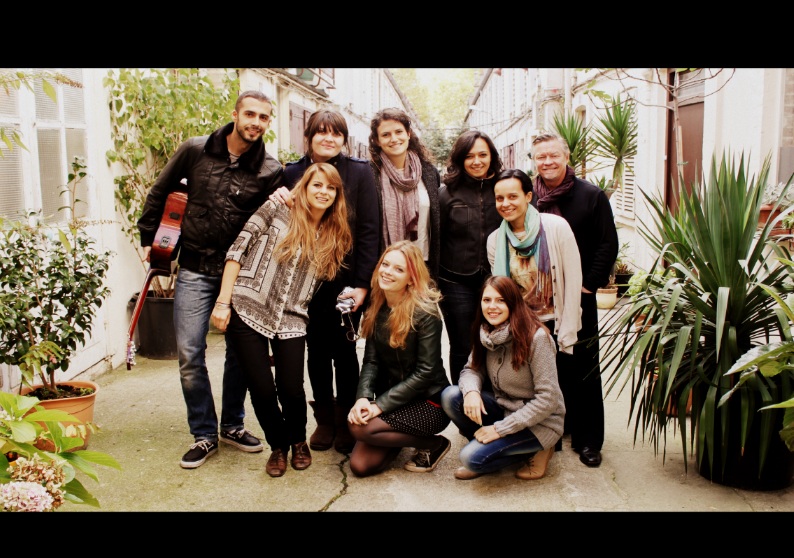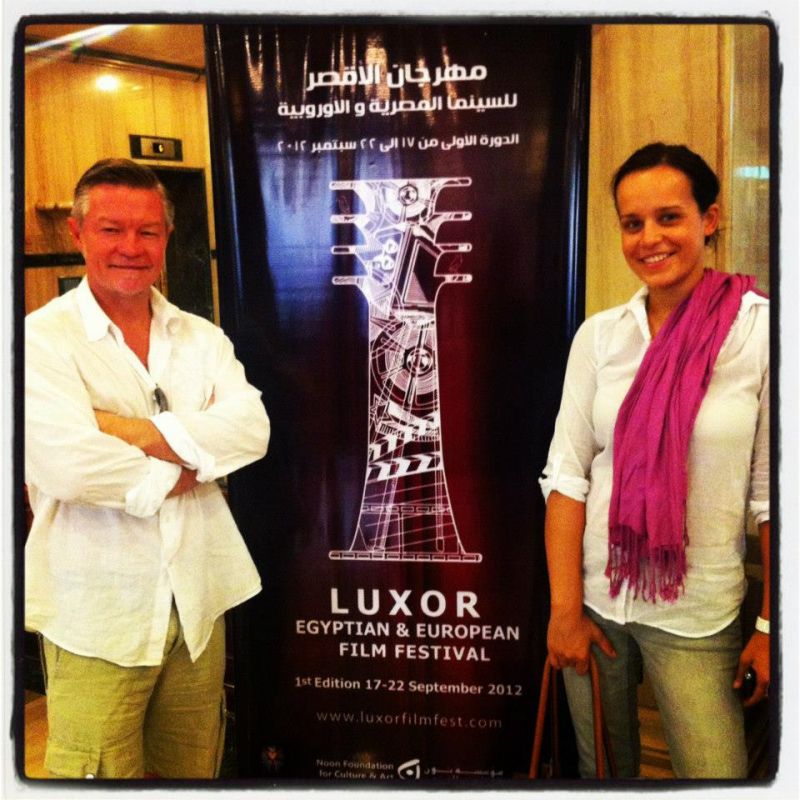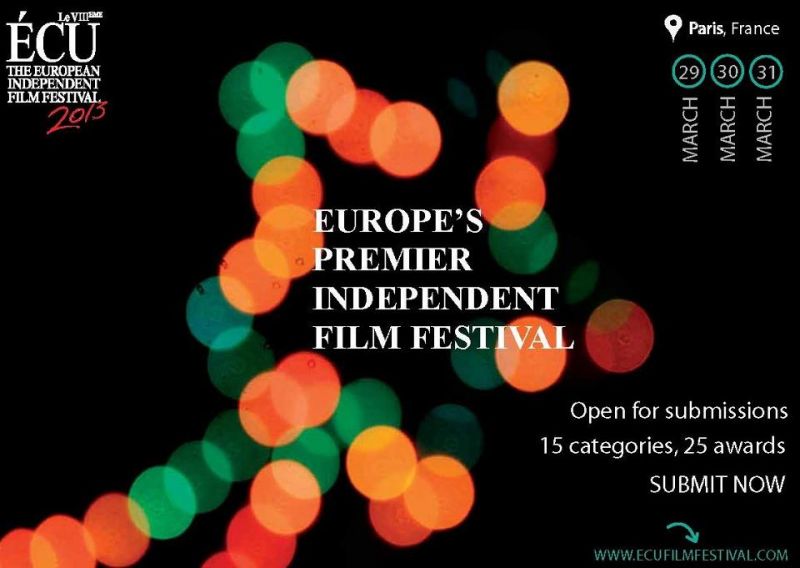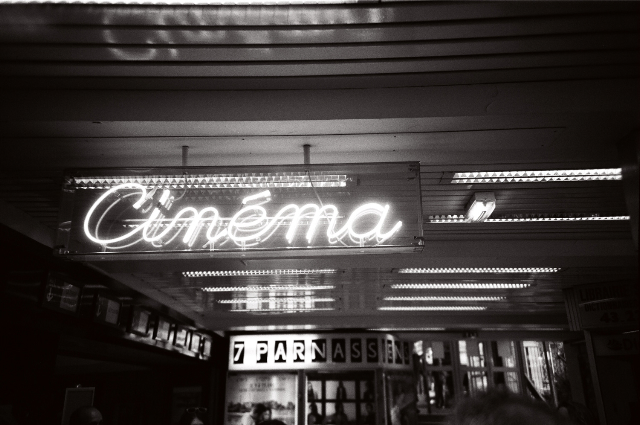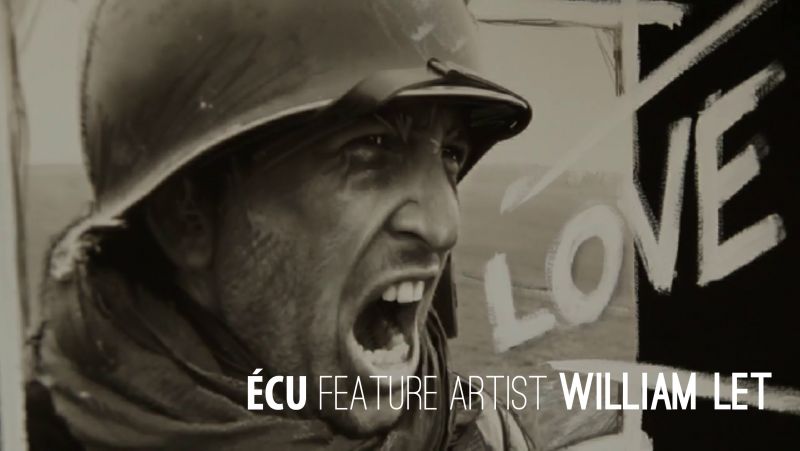|
|
||
|
Pro Tools
FILMFESTIVALS | 24/7 world wide coverageWelcome ! Enjoy the best of both worlds: Film & Festival News, exploring the best of the film festivals community. Launched in 1995, relentlessly connecting films to festivals, documenting and promoting festivals worldwide. Working on an upgrade soon. For collaboration, editorial contributions, or publicity, please send us an email here. User login |
Meet Indie Director: L'ASILO DI BREA
L’asilo di Brea is a recent submission to ECU 2010’s Non European Dramatic Short category. Set in Los Angeles, the film traces the meeting between two strangers who after a casual night of intimacy, make the twisted discovery that their relationship is more than they realised. We talk to director Dae Hoon Kim about his inspiration behind the film, the wealth of symbolic imagery as well as his cinematographic influences. By Mairi Cunningham
Q: First off, tell me about your film. Where did your idea for the storyline come from? It struck me as a quest for identity which remains ultimately unfulfilled. L'Asilo di Brea is inspired by the continuing division of the two Koreas, in large part caused by outside forces, namely the US and Russia. I wanted to track two characters who are physically distant from the peninsula, but who are still nonetheless hopelessly mired within the conflict. I wanted to place these characters in a high stakes moment, where their blood bond was tested.
Q: Tell me a little about your casting process. The storyline is such that your two leading characters had a very complex interaction to convey to the spectator. Tell me a little bit about the task of directing your two actors. I think the trickiest part was getting the tone right. I didn't want to create a spectacle of their fate. I felt there was a danger that if their roles were overdone, things could become ridiculous. Still, how might someone react to having slept with their sibling? I'm sure utter shock and horror would come to mind, but this seemedtoo simple and spastic. I thought a delayed reaction, almost a denial might be more true to the situation. With Leila and Ji, we had many discussions and rehearsals to first play the range of possibility, then to dial it down to a good balance for the reflective mood of the film. As far as casting, I liked the actors' faces, because from them I thought I could feel sorry for them and they were capable of light-hearted and innocent smiles. Leila also brought many interesting insights from her own very unique experiences, which helped give me direction where to take the characters' interactions.
Q: Explain why you chose the two characters to meet in the setting they did. I'm not sure if you mean the tar pits or the party, so I'll answer for both. I always thought the half-siblings should meet in some casual setting where being strangers would not be such an obstacle for them to quickly get close. I ended up choosing the S&M setting because of the potential for visual metaphor, like with the rope bondage, and to disclose a perversion/fetish in the characters' minds which may or may not be a product of their uncertain roots. As for the tar pits, I used to live near them. In the largest pit, there is a fabricated mammoth family re-enacting a drama of survival. The mother and baby watch helplessly from the edge as the father struggles in the tar to his likely doom. I found it intriguing that mammoth families probably had family drama way before humans and sought to incorporate that "prehistoric timelessness" into this story abouthalf-siblings also separated by forces beyond their control.
Q: Where was this scene shot? The party scene was shot in an actual S&M venue used by experimental couples, parties and productions. The performers are real performers, some of them quite famous in that community. The tar pit scene was shot at the La Brea Tar Pits in Los Angeles. It's so strange that there are tar pits right smack in the centre of the city on Wilshire Blvd (right next to many film industry offices I might add).
Q: I was struck by the ethereal quality to your film, which stemmed in particular from your use of still image. Tell me where your inspiration came from to create these scenes which consist of still image alone. I began my interest in the arts with still photography which was some years before my interest in the moving image began to develop. I love the simplicity of still image and the potential to capture a story or idea within it. In fact, my favorite short film is "La Jetee" which is almost entirely a photo montage. That film inspired me that a story could be told in such a way and really opened my mind to the world of creative possibility. As for "L'Asilo di Brea," in the film I wanted to create two possible alternate realities that may or may not be real. Treating one reality with still images, was a creative choice that helped me make a strong distinction between these worlds.
Q: This ethereal quality to the film also stems from the haunting music. Tell me a little bit about the soundtrack. "Kamchatka" is a song by Kino, a Russian rock band. Kamchatka is a particular Russian peninsula (very diverse flora and fauna, and with many volcanoes) that was off limits for a time, being used as a military zone. I don't speak Russian, but I could still feel a sense of nostalgia and longing in the song that I liked very much. The lead singer, Viktor Tsoi also happens to be half-Korean, half-Russian, and his songs are often political. "Progresion" is by Ricardo Juarez, who helped create the look of the film in the still images. He is a very talented young graphic artist, who also creates electronic music. This particular piece had a natural ambience and reflective character which I thought fit these still scenes.
Q: Explain the apocalyptic image of the city which appears towards the end of the film. I chose to portray a city in apocalypse because how could this possibly be real? But then, with the California wildfires, the Los Angeles riots, it could very well be real. The atmosphere in this scene is not far removed from that of those events, whether man-made or natural (is there any difference?). Perhaps this type of atmosphere is also not unlike an apocalypse which might have befallen prehistoric animals in that very spot, very very long ago. I was very drawn to these possibilities in this scene.
Q: Tell me a little bit about the recurring image of the pool of tar; is it as symbolic as much as it is visual? And also the 2 statues of the sabre-tooth tigers? The pool of tar is initially what physically separates the characters. It could be thought of as the demilitarized zone along the 38th parallel. Or with the tar as a metaphor for memory, it could serve as the overwhelming memory, or the incomplete memory which impedes their reconciliation (more explanation on tar below). For me, the statues (sabre-tooth tigers) are a strong visual image. They look like they are fighting but I think they could be embracing, or both, which I thought appropriate to this story.
Q: And finally explain the meaning of the title? "L'Asilo di Brea" means Asylum of Tar (half-Italian, half-Spanish). I liked the idea of 'Asylum,' which has manymeanings/connotations/identities, spanning from a place of safety, a refuge for political prisoners, or a place for the mentally insane - all of which I think are appropriate here. As far as the tar, I began to appreciate the tar in my visits to the La Brea Tar Pits. Within it are the fossils of prehistoric animals, who had many years ago,struggled in their evolutions as species. I think we as humans are struggling as well, I guess from the very beginning. Perhaps it is a constant struggle that will never end. Or perhaps it might end very soon. From a distance the black smelly tar may seem disgusting, but closer up, it can look very beautiful and even cosmic in more ways than you can imagine. The tar is a metaphor for memory, a memory beyond humans, held by the earth.
20.01.2010 | ÉCU-The European Independent Film Festival's blog Cat. : Album California California Dae Hoon Kim Director Entertainment Entertainment Graphic Artist La Brea Tar Pits La Jetee Lagerstätten Los Angeles Natural Disaster Natural history of California Person Career Pleistocene Ricardo Juarez Russia singer Tar Viktor FILM
|
LinksThe Bulletin Board > The Bulletin Board Blog Following News Interview with EFM (Berlin) Director
Interview with IFTA Chairman (AFM)
Interview with Cannes Marche du Film Director
Filmfestivals.com dailies live coverage from > Live from India
Useful links for the indies: > Big files transfer
+ SUBSCRIBE to the weekly Newsletter Deals+ Special offers and discounts from filmfestivals.com Selected fun offers
> Bonus Casino
User imagesAbout ÉCU-The European Independent Film Festival Hillier Scott Hillier Scott (ECU)
Scott Hillier, Founder and President of ÉCU - The European Independent Film Festival
Scott Hillier is a director, cinematographer, and screenwriter, based in Paris, France. In the last 20 years, Hillier has gained international recognition from his strong and incredible cinematography, editing, writing, producing and directing portfolio in both the television and film industries.
Scott began his career in the television industry in Australia. In 1988, he moved to London getting a job with the BBC who then set him to Baghdad. This opportunity led him to 10 years of traveling around world for the BBC, mainly in war zones like Somalia, Bosnia, Tchetcheynia, Kashmir, and Lebanon. After a near fatal encounter with a Russian bomber in Tchechnyia, Hillier gave up his war coverage and began in a new direction.
He moved to New York City in 1998. He directed and photographed eight one-hour documentaries for National Geographic and The Discovery Channel. Based on his war knowledge and experience, Hillier wrote and directed a short film titled, “Behind the Eyes of War!" The film was awarded “Best Short Dramatic Film” at the New York Independent Film and TV Festival in 1999. From that he served as Supervising Producer and Director for the critically acclaimed CBS 42 part reality series, "The Bravest” in 2002 and wrote and directed a stage play called, "Deadman’s Mai l," which ran at Le Théâtre du Moulin de la Galette in Paris during the summer of 2004. He then became the Director of Photography on a documentary titled, “Twin Towers." This was yet another life changing experience for Hillier. The riveting documentary won an Academy Award for "Best Documentary Short Subject" in 2003. In 2004, Hillier changed continents again, spending three months in Ethiopia. He produced “Worlds Apart,” a pilot for ABC America / True Entertainment / Endemol. As you can see, Hillier was and is always in constant movement and enjoys working in a number of diverse creative areas including documentaries, music videos, commercials, feature and short films.
Scott studied film at New York University and The London Film and Television School. He also studied literary non-fiction writing at Columbia University. Hillier's regular clients include the BBC, Microsoft, ABC, PBS and National Geographic. Between filming assignments, he used to teach film, a Masters Degree course in Screenwriting at the Eicar International Film School in Paris, France and journalism at the Formation des Journalistes Français in Paris, France.
View my profile Send me a message The EditorUser contributionsUser links |



















